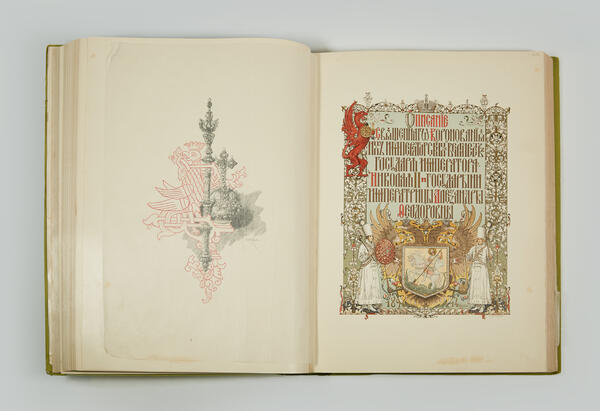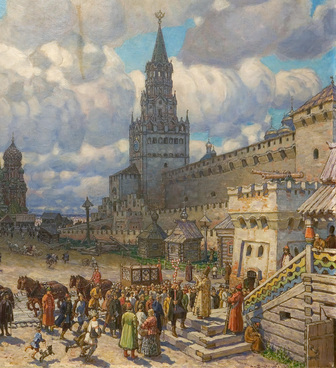The Coronation Album of 1896 in the collection of the Museum of Moscow, is rightfully considered one of the best and most luxurious editions of the Russian book printing of the late 19th — early 20th century. It was printed in St. Petersburg in 1899, three years after the coronation of the last Russian Emperor Nicholas II, which surpassed all previous ones in its scale.
During all those years, meticulous work on collecting the material and preparing the album for print was underway. Renowned Russian historians and writers Vasily Krivenko, Elpidifor Barsov, Sergey Belokurov, as well as the best artists of the time Nikolay Samokish, Alexander Benois, Viktor Vasnetsov, Ilya Repin, Valentin Serov and others were engaged in the work. The Coronation Album was supposed to depict the grandeur of the Russian tsars’ coronation ceremony, the inviolability and divinity of the imperial power and the indestructibility of the social system. For this purpose, a two-volume edition was required.
The first volume provides an overview of all the coronations of the Russian monarchs and a description of the coronation of Emperor Nicholas II and Empress Alexandra Feodorovna. The second volume consists of a detailed description of the honoring of the imperial couple. It also includes numerous additional materials: manifestos, decrees, programs of the events, lists of guests, who came to Moscow to take part in the celebrations, menus for all the days of the festivities. The collection contains photographs of guests, phototypes from old engravings and manuscripts, reproductions from the original works by Benois, Vasnetsov, Repin, Serov and others. Decorative design of capital letters and endings was created by the artist Nikolay Samokish, who also prepared the sketch of the cover.
The Coronation Album was published in a limited edition (according to some researchers — about 600 copies) in Russian and French. The large format, expensive types of paper (vellum, verge, etc.), bright colorful covers with the coat of arms of the Russian Empire, medallions of white metal on the upper panels, gold edgings — all this embodied the greatness of the Romanov dynasty.
The copy from the collection of the Museum of Moscow belonged to Vladimir Akinfov (1841–1914), the Governor of Simbirsk, privy councilor, hereditary nobleman of the Vladimir Governorate.






